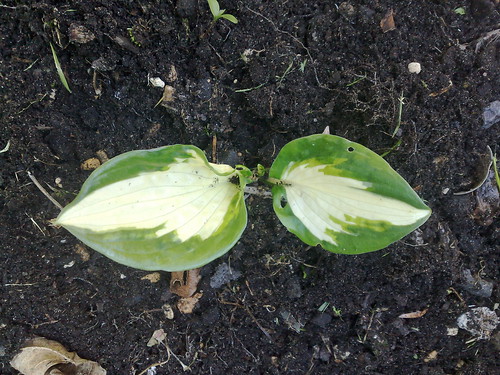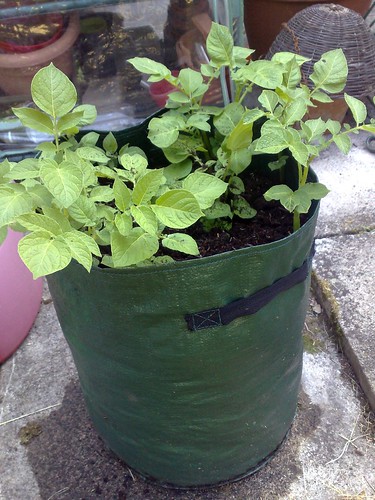- Vegetable and fruit peelings - mixed together these are excellent - high in essential nitrogen and carbon
- Tea leaves, coffee grounds and crushed egg shells
- Weeds - the heat generated inside the bin by the decomposition process will ensure most wees seeds and diseases are destroyed. However pernicious weeds such as couch grass, bindweed or creeping buttercup should be avoided as they love compost heaps and will keep on growing.
- Grass cuttings - high in nitrogen and a good activator. Avoid thick layers as they can compact and turn to lime. If you have a lot of grass, mix it with more woody material and kitchen scraps.
- Hair - off your pet or family - no problem.
- Paper - paper and soft cardboard such as egg trays can be added in small amounts but ideally should be shredded or scrunched up.
- Evergreen clippings - only add in small amounts as take a long time to decompose
- Leaves - contain lignin and take a long time to decompose, the same as wood. Best dealt with separately in leaf mould piles.
- Prunings - only add small amounts and chop up well.
- Straw and hay - old and chopped is best. Soak well before adding if dry.
- Animal manure - vegetarian pets only, such as guinea pig or rabbits. Best mixed with straw. Very good activators.
- Vacuum dust - the contents of a vacuum cleaner sack compost well particularly of you have wool carpets.
Webring
Sunday, June 14, 2009
What can you compost?
Composting Tips
- Site your compost bin in a sunny spot if possible. This will heat up the compost.
- Good aeration is required to produce the best compost. To help aerate your bin you can add scrunched up newspaper which creates air pockets.
- Occasional turning of the material will ensure that more air gets to the centre of the bin and will speed up decomposition.
- It is essential to have a good mix of waste material in your composter to aid decomposition, ie. grass, paper, leaves, fruit & vegetable peelings.
- Do not let the compost dry out. Add water when necessary in very dry hot weather and remember to keep the lid on.
- You can insulate your composter using old carpet on top or by bubble wrapping in the winter.
Rat
Still got droppings of some animal in the shed but found a dead rat in the middle of the lawn the other evening. I wonder if that is the pest that has been eating and pooing in my shed!!
Polystichum setiferum
Soft Shield Fern
Origin: Germany
Height and spread: 45-60cm * 60cm
Soil: Prefers moist, humus rich soils. Adaptable to poor, dry soils
Location: Finely cut, evergreen, soft, deep green fronds making a dense clump. Ideal for cool borders in shade or under trees with shrubs and perennials for contrasting foliage effect.
Planting: Add well rotted leaf mould with 25% sharp sand to top 30-45cm of soil. On heavy soil dig out 30*45cm hole and fill with leaf mould, sand and soil mixture
Care: Remove old fronds in Spring after last frosts to allow new growth to uncurl. A light organic fertiliser feed, three weekly from late Spring to mid-Summer will produce large lush fronds. Allow plant to mature and harden before Winter. Protect plants during severe weather by mulching crown or covering. In hot dry conditions a fine spray of water will refresh and humidify plants.
Origin: Germany
Height and spread: 45-60cm * 60cm
Soil: Prefers moist, humus rich soils. Adaptable to poor, dry soils
Location: Finely cut, evergreen, soft, deep green fronds making a dense clump. Ideal for cool borders in shade or under trees with shrubs and perennials for contrasting foliage effect.
Planting: Add well rotted leaf mould with 25% sharp sand to top 30-45cm of soil. On heavy soil dig out 30*45cm hole and fill with leaf mould, sand and soil mixture
Care: Remove old fronds in Spring after last frosts to allow new growth to uncurl. A light organic fertiliser feed, three weekly from late Spring to mid-Summer will produce large lush fronds. Allow plant to mature and harden before Winter. Protect plants during severe weather by mulching crown or covering. In hot dry conditions a fine spray of water will refresh and humidify plants.
Tuesday, June 09, 2009
Compost Bin
New compost bin from Conwy County Borough Council. Get yours here: http://www.conwy.gov.uk/doc.asp?cat=4448&doc=17200
Sunday, June 07, 2009
Asplenium scolpendrium
Hart's Tongue Fern
Origin: Great Britain
Height and spread: 45cm *45cm
Soil: Tolerates most soils
Location: Evergreen. Bright green leathery fronds are a good contrast with other ferns. Ideal for crevices, walls and under trees
Planting: Add well rotted leaf mould with 25% sharp sand to top 30-45cm of soil. On heavy soil dig out 30*45cm hole and fill with leaf mould, sand and soil mixture
Care: Remove old fronds in Spring after last frosts to allow new growth to uncurl. A light organic fertiliser feed, three weekly from late Spring to mid-Summer will produce large lush fronds. Allow plant to mature and harden before Winter. Protect plants during severe weather by mulching crown or covering. In hot dry conditions a fine spray of water will refresh and humidify plants.
Origin: Great Britain
Height and spread: 45cm *45cm
Soil: Tolerates most soils
Location: Evergreen. Bright green leathery fronds are a good contrast with other ferns. Ideal for crevices, walls and under trees
Planting: Add well rotted leaf mould with 25% sharp sand to top 30-45cm of soil. On heavy soil dig out 30*45cm hole and fill with leaf mould, sand and soil mixture
Care: Remove old fronds in Spring after last frosts to allow new growth to uncurl. A light organic fertiliser feed, three weekly from late Spring to mid-Summer will produce large lush fronds. Allow plant to mature and harden before Winter. Protect plants during severe weather by mulching crown or covering. In hot dry conditions a fine spray of water will refresh and humidify plants.
Thursday, June 04, 2009
Fire and Ice
I think this is the Fire and Ice Hosta coming through. This picture is quite a close up and makes it look bigger than it is!!
The original plant can be seen here
Tuesday, June 02, 2009
Subscribe to:
Comments (Atom)










